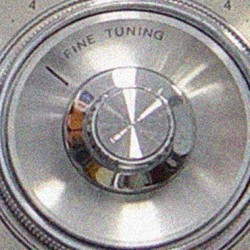 How micro-RNAs fine tune gene expression
How micro-RNAs fine tune gene expression
PRC1 is a polycomb group (PcG) protein – with a special role in resculpting the nuclei of stem cells during lineage specification [the irreversible ‘choice’ a stem cell makes in turning into a specific cell type]. What has perplexed scientists researching its function is that PRC1 takes on numerous different forms – 180 to be exact, with no clear reason why such multiplicity would be needed for cellular function.
Now, a group at the CSC has found evidence that small molecules called microRNAs ‘fine tune’ PRC1 following transcription, tailoring its component subunits to suit the job in hand. “This is the first study that looked at how PRC1 components can be regulated by micro RNAs during ESC [embryonic stem cells] differentiation,” confirms Jesus Gil, the study’s lead author.
PRC1 comprises four protein subunits, with two, three, five and six versions of each subunit in turn, giving 180 variants of PRC1 (2x3x5x6). The complex acts on the promoters of transcription factor (TF) genes. TFs are protein signallers, which switch genes on or off, priming a cell for differentiation.
The CSC team wanted to identify which of the protein subunits of PRC1 interacted most closely with the molecular tags in the transcription factors associated with pluripotency. They found that one subunit – called Cbx7 – was always bound to the pluripotency tags in mouse stem cells, indicating its crucial role in maintaining the state. To test this, the team performed a ‘knock down’ of Cbx7. “We found that the cells spontaneously began to differentiate,” explains Gil, “whereas when we switched on Cbx7 (called ectopic expression) differentiation was inhibited, promoting stem cell self-renewal.”
They found that when a cell differentiates, Cbx7 levels go down, but levels of other PRC1 subunits, Cbx2, Cbx4 and Cbx8 increase. Notably, an increase of these subunits was previously reported in studies of PRC1 interaction with transcription factors in cancer cells.
With such a clear role for a decrease in Cbx7 being important for cell differentiation, the researchers wanted to identify the mechanism behind it. They used a functional screen to look at the interplay of miRNAs with Cbx7, and found that two, called miR-125 and miR-181, directly regulate Cbx7 expression, the first time this has been shown.
Gil concludes: “Taken together, our results suggest distinct, context-dependent roles for individual PRC1 subunits and highlight the importance of Cbx7 and its regulatory miRNA network in ESC self-renewal and differentiation.”
SJ
What do PcG enzymes do?Cells all start out the same – as stem cells – each with the same DNA sequence. Wrapped around histone proteins, the DNA within the nucleus is highly folded. As a cell matures, polycomb group (PcG) enzymes resculpt its genomic architecture. This impacts on cell fate by making some of the cell’s genes more accessible to the protein machinery that transcribes and translates them than others. The more accessible genes have the lead in telling the cell what to become (a heart, brain or liver cell, for instance). |
Reference:
O’Loghlen, A, Muñoz-Cabello, AM, Gaspar-Maia, A, Wu, HA, Banito, A, Kunowska, N, Racek, T, Pemberton, HN, Beolchi, P, Lavial, F, Masui, O, Vermeulen, M, Carroll, T, Graumann, J, Heard, E, Dillon, N, Azuara, V, Snijders, AP, Peters, G, Bernstein, E, Gil, J (2012). MicroRNA Regulation of Cbx7 Mediates a Switch of Polycomb Orthologs during ESC Differentiation. Cell Stem Cell 10, 33–46.
